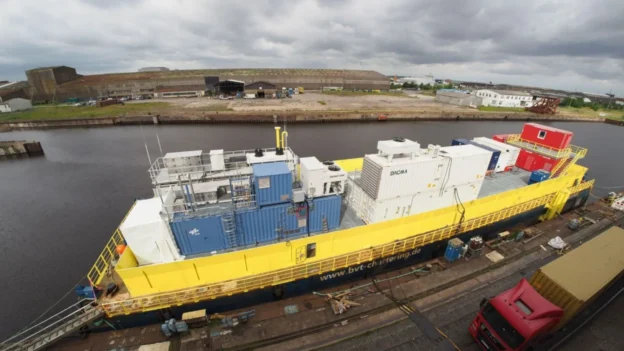Germany has inaugurated the first floating platform for the production of synthetic fuels at sea thanks to the H₂Mare project and its PtX-Wind initiative. Based in Bremerhaven, this facility marks the start of a new energy concept where wind and sea generate sustainable fuels directly offshore.
How does the modular platform work at sea?
The offshore plant operates autonomously using offshore wind energy. offshore wind powercapturing CO₂ from the ambient air and using seawater that is desalinated prior to electrolysis. This hydrogenated synthesis gas is processed using the Fischer-Tropsch method to obtain liquid fuels. The key to this facility lies in its ability to operate without connection to the power grid, which makes it possible to take advantage of offshore areas with high wind potential.
The modular system, designed and evaluated by partners such as KIT, DLR, Fraunhofer ICT and the Technical University of Berlin, can adjust its output according to wind availability. In addition to e-fuels, the project explores the production of liquid methanemethane, methanol and ammonia by co-electrolysis and marine electrolysisexpanding the applications Power-to-X applications directly at sea.
The innovation behind H2Mare and PtX-Wind
With a holistic approach, H₂Mare develops technologies that integrate wind turbines with electrolyzers adapted to offshore conditions and safe, digitally optimized platforms.
This combination minimizes costs by eliminating the need for onshore infrastructure and reduces pressure on local power grids. Tests off Helgoland from July 2025 will be decisive for future large-scale platforms.
Does this offshore production of synthetic fuels matter?
This floating plant represents a key breakthrough for the decentralized production of synthetic fuels. synthetic fuels in sectors that are difficult to electrify, such as long-distance transport. It also enables more efficient use of the offshore wind resource and contributes to climate goals through sustainable fuel generation from the sea.
Follow us on social networks and don’t miss any of our publications!
YouTube LinkedIn Facebook Instagram X (Twitter) TikTok
Source and photo: KIT

